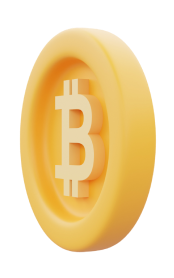


15
Anyone who has ever tried to buy or exchange cryptocurrency has probably run into the term “transaction ID.” But what exactly is it, and why is it important for both crypto and fiat transactions? This guide will help you understand transaction IDs, their uses, and how to find them.
A transaction ID is a unique identifier assigned to each transaction. Whether it's a crypto exchange, fiat transaction, or online payment, every transaction gets its own transaction ID.
Transaction IDs typically consist of a string of random letters and numbers. They vary depending on the platform or payment system and can be case-sensitive or not. These identifiers usually use Latin letters.
Why do you need to know your transaction ID? Here are some common reasons:
All verified Bitcoin transactions added to the blockchain have a unique transaction ID, also known as a transaction hash. This ID allows you to refer to and track individual BTC transactions.
For example, here’s the transaction ID of Laszlo Hanyecz, the man who purchased two pizzas for 10,000 BTC in May 2010:
a1075db55d416d3ca199f55b6084e2115b9345e16c5cf302fc80e9d5fbf5d48d
You can use block explorers to look up transaction details, such as the amount, sender’s address, transaction status, and more. Note that sharing your transaction ID does not expose your personal information, so it’s safe to use for inquiries and tracking.
Since March 2021, PayPal has supported cryptocurrency transactions. All transactions made through PayPal, whether crypto or fiat, have unique transaction IDs. These IDs consist of 17 random letters and numbers and can be found in the "Activity" tab of your PayPal account.
Google Pay also supports crypto payments. To find your Google Pay transaction ID, visit pay.google.com, navigate to the "Activity" tab, and select the specific transaction. The transaction ID will appear at the bottom of the transaction details.
Although they may sound similar, purchase IDs and transaction IDs are not always the same. A purchase ID refers to a specific payment, while a transaction ID relates to the movement of funds.
For example, if a user pays with loyalty points, the purchase may not have a transaction ID since no funds were transferred. However, in cases where funds are involved, a transaction ID will always be generated.
Transaction IDs are typically displayed at the end of a purchase or exchange process. Here are some tips to find them:
Keep in mind that finding transaction IDs on block explorers for highly active cryptocurrencies may be challenging due to the sheer volume of transactions.
Please note that this article is for informational purposes only and does not constitute financial or investment advice. The cryptocurrency market is highly volatile, and all investors and users should do their own research and understand local regulations before engaging in transactions.